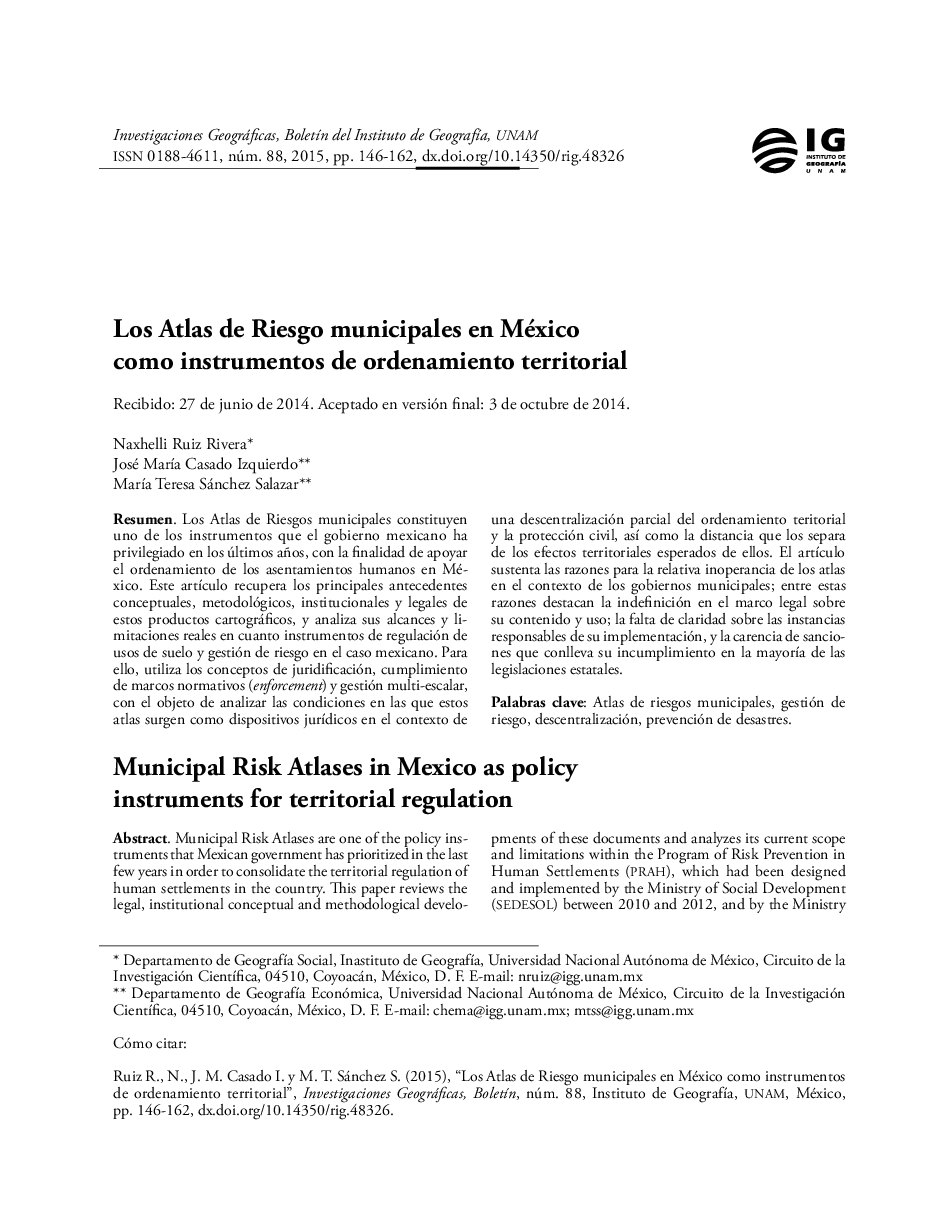| Article ID | Journal | Published Year | Pages | File Type |
|---|---|---|---|---|
| 7474637 | Investigaciones Geográficas, Boletín del Instituto de Geografía | 2015 | 17 Pages |
Abstract
However, despite its undeniable importance, there is still a remarkable inoperative character of many of these Atlases. The paper intends to explain the reasons behind this problem by identifying the distance between the normative content of these documents and their conditions of enforcement. The authors review the laws and programs that define the scope and the actual rules of implementation of the Atlas, and discuss why the expected outcomes on risk reduction and land regulation are not possible under the current normative and organizational structure within which Atlas operate. Some of these reasons are the vagueness about what kind of information should an Atlas contain and how this information should be used; the lack of clarity regarding who should implement that in each government level; and finally, the lack of sanctions if the restrictions derived from the risk analysis contained in the Atlases are unfulfilled. The paper concludes that Atlases have emerged as an informative rather than regulatory document, in a context of weak institutional capacities at the municipal level. With that conclusion the authors urge policymakers to review the position of risk Atlases within the National System of Civil Protection, as well as the legal framework of natural hazard provisions and land use planning in order to strengthen them.
Related Topics
Social Sciences and Humanities
Social Sciences
Geography, Planning and Development
Authors
Naxhelli Ruiz Rivera, José MarÃa Casado Izquierdo, MarÃa Teresa Sánchez Salazar,
